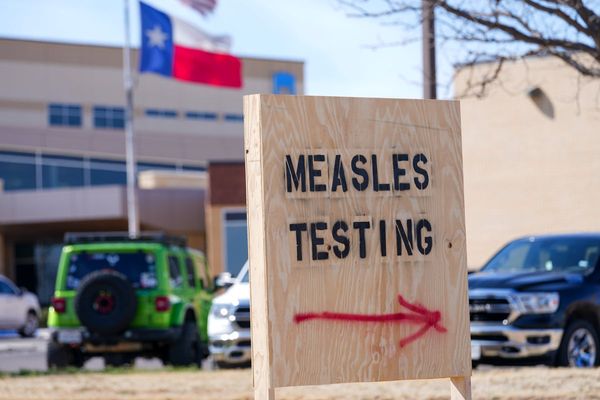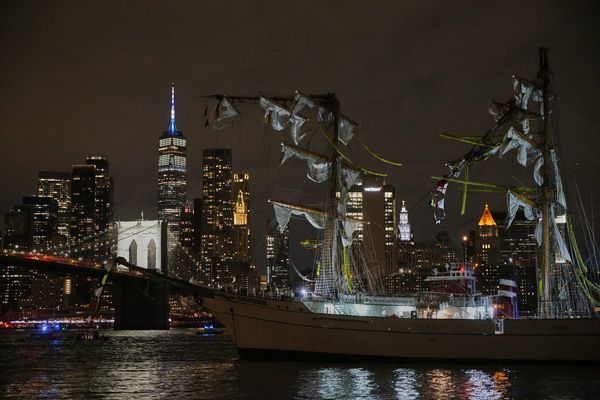
Art dealer Robert Fraser was handsome, glamorous, very well-dressed, and the encapsulation of swinging London. At his Mount Street flat, on any evening in the mid 60s, you might encounter Jim Dine, Keith Richards, William Burroughs, Patrick Caulfield, Paul McCartney, Tony Curtis or the flamboyant Fulham footballer Bobby Keetch. Like his antecedent Beau Brummell, he became a living work of art, the core of a social world, providing inspiration for most who crossed his path, and leaving barely a trace. He is best remembered now as the person handcuffed to Mick Jagger, on their way to Wormwood Scrubs in 1967 after the infamous Redlands drugs bust, in Richard Hamilton’s series of prints Swingeing London. This image is one of the few frozen moments in Fraser’s life. Not surprisingly, a detail of it provides the cover for Harriet Vyner’s engrossing biography, now back in print and updated.
First published in 1999, Vyner’s oral history could call on a remarkable list of associates, a good few of whom are no longer with us. She wisely keeps her voice at a distance, given the rich variety of eyewitnesses at her disposal. The words of the more familiar protagonists – McCartney as eager art enthusiast, Peter Blake as the blushing square peg, the posh gossip of Marianne Faithfull – are palpably true. Again and again, anecdotes from a seemingly endless party remind the reader just why the 60s are endlessly raked over: ex-army colleagues, poets, footballers, pop stars, actors and artists mingle in Fraser’s world, along with drug dealer Spanish Tony and a suggested underworld of rent boys and rough trade.
Vyner never loses sight of what made Fraser the centre of attention. From the start, he had a fast, instinctive grasp for art. As a boy, he would visit the Tate and write short essays on the works for his own amusement; once he’d seen a painting he would always recognise it a second time and know the artist. According to his brother Nicholas, “he didn’t intellectualise pictures at all, he just liked a picture or didn’t”. Dress sense and individuality were equally important – he plastered the walls of his boarding school room with images from Man About Town, the fashion magazine owned by Michael Heseltine.
During a stint in the army, he carried off being the old soldier, as if there was nothing he hadn’t seen – he was just out of his teens. Stationed in Uganda, as a second lieutenant, his sergeant major was Idi Amin, a man he described as an “enormous thug” but with whom, according to Faithfull, he seems to have had a fling; she says that Fraser would blush and look pleased with himself whenever Amin appeared on television. His time in the King’s African Rifles sounded to Jagger as if “it was all a bit of a lark ... a den of vice and iniquity, the last days of colonial life, all a bit of a shambles. Those were the days!” Vyner thinks that Fraser probably found it very dull.
It was in the US that his taste for modern art was fully realised. He only intended a short visit in 1959, but was soon working for the director of the Carnegie Institute in Pittsburgh, learning how to stage an international exhibition and becoming friends with Ellsworth Kelly. This friendship led him to an artists’ community on Coenties Slip in New York, home to minimalist and proto-pop artists such as Robert Indiana, Agnes Martin and Jack Youngerman. A little later, he was on the west coast hanging out with Jim Dine. Fraser became a gentleman art dealer – though he was a pretty hopeless dealer, and not always a gentleman. Patrick Caulfield, Dine, Bridget Riley, Ed Ruscha and Jann Haworth would all become friends and all lose out badly in financial dealings with him.
By 1962, the Robert Fraser Gallery had opened on Duke Street, Mayfair, with a Jean Dubuffet exhibition and a Cedric Price interior. The gallery became one of the hippest locations in London, which was, for a while in the mid 60s, the world’s cultural epicentre. The Beatles and the Stones, wanting to learn from him, fought for Fraser’s attention and respect. Soon he acquired his “Groovy Bob” nickname and then, rather rapidly, his debts were called in and his life began to burn out.
Money simply wasn’t important to Fraser, even though it clearly meant something to almost everyone around him. Jagger regrets not buying a Magritte for a bargain price when it was offered to him; worse, the works in a Dine exhibition were sold off for peanuts after Fraser was sent to prison for heroin possession following the Redlands raid in 1967. He borrowed money from friends and colleagues, selling paintings on their behalf and rarely passing on the proceeds. To be in his orbit was, presumably, payment enough.
As comfortable as social butterflies like Faithfull were with this world, the more grounded Caulfield described Fraser’s salon as “glamorous from the outside, but it wasn’t glamorous at all. It was rather painful ... we just sort of sat around.” The tail end of Fraser’s 60s shows a side of the decade that was fictionalised at the time in bleak films such as The Touchables and Michael Sarne’s tale of sour wealth, Joanna, but is now hardly remembered. Neither film was especially successful as no one then – or now – wanted curtains to part to reveal 60s London’s central characters as often spoilt, vicious, bored and boring.
Fraser himself was never boring. Yet, while Vyner paints the life of the dandy as endlessly exciting in its pomp, it was also an intrinsically lonely one, certain to end unhappily. Fraser’s death (from Aids-related illness in 1986) was, like Brummell’s, painful and impoverished. He never kept any artworks that passed through his hands, one of his few regrets. In 1968, he had already seemed bored. He was smart enough to realise that the jail term he had been punished with – effectively on behalf of callow 60s pop culture, retribution from a jealous older generation – had marked the end of an era: the swinging London era, the Fraser era.
• Bob Stanley’s Yeah Yeah Yeah: The Story of Modern Pop is published by Faber. To order a copy of Groovy Bob for £10, go to bookshop.theguardian.com or call 0330 333 6846. Free UK p&p over £10, online orders only. Phone orders min p&p of £1.99.







